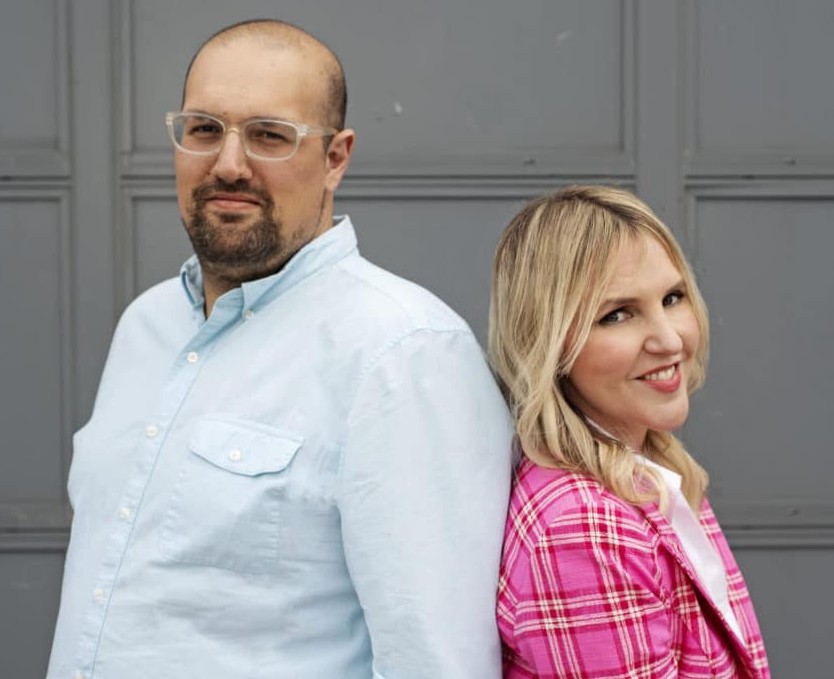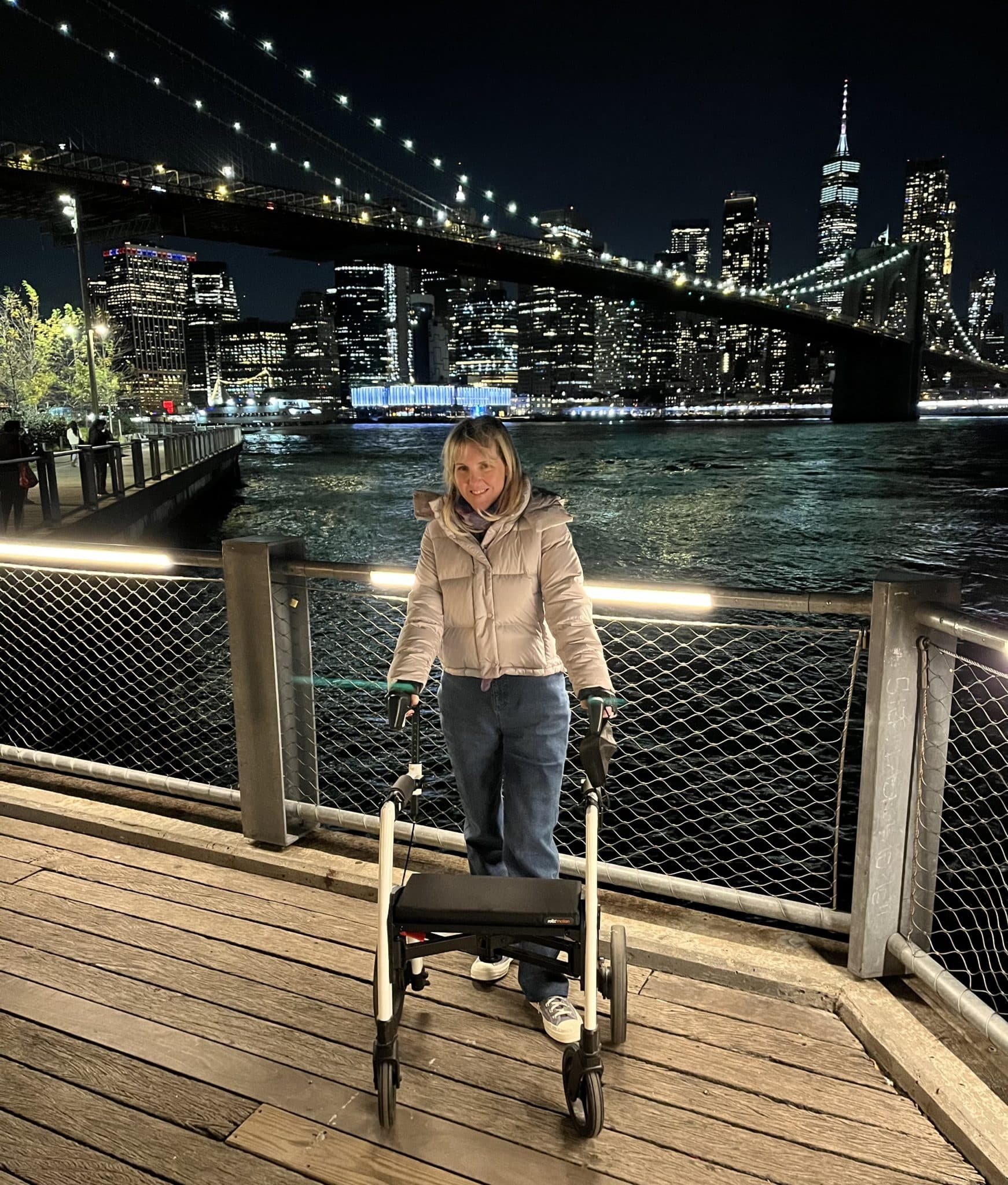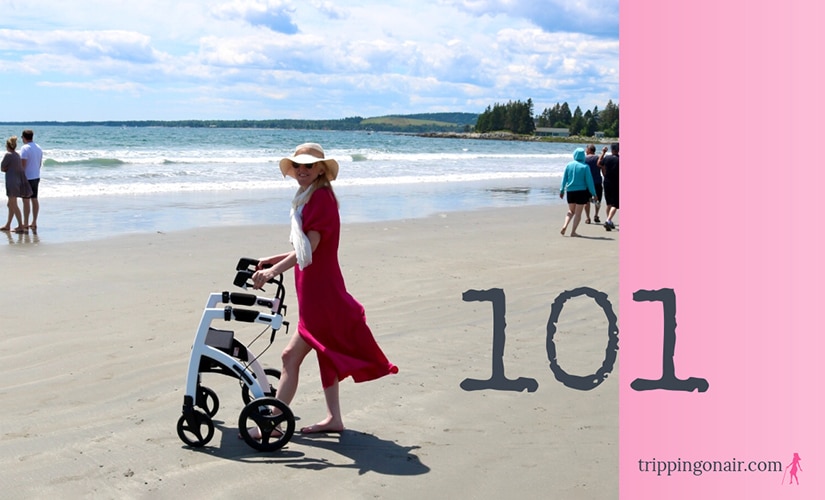Navigating mobility challenges can be a journey with many ups and downs, involving a lot of self-reflection and practical decision-making. Taking the leap towards accepting the potential need for assistive devices can be a daunting step, given the internalized ableism and the societal stigma attached to mobility aids, that act as tangible hurdles in this transition. Shifting perspectives is key to embracing acceptance, recognizing assistive devices not as constraints but as tools that empower, enhancing both independence and overall quality of life.
Yet, as the path unfolds, questions inevitably arise – which mobility aid is the right fit? What options are out there in the vast market? And who can provide the guidance needed?
In a captivating episode of the Tripping on Air podcast, powered by Accessible Media Inc. Canada, host Ardra Shephard and co-host Alex Hajjar share invaluable insights on navigating the landscape of mobility aids. Covering everything from the diverse array of options available to functional features, styles, and effective strategies for adapting to change, the episode offers a wealth of knowledge to empower individuals on their mobility journey.
To top it off, we were truly honored to discover ourselves featured on Ardra’s list of favorite mobility aid brands! The excitement doesn’t stop there – our Canadian partners from Prairie Velo also joined the conversation, revealing even more thrilling details that we’re eager to share with you. So, get comfortable and read on!
Sailing through the stigma
Ardra opens the conversation by sharing her experience with progressive Multiple Sclerosis (MS) and the challenge of acknowledging the opportune moment to start using a mobility aid. Alex, who is an MS expert by virtue of marriage, joins Ardra in shedding light on the profound impact of social stigma. Simultaneously, he underscores the crucial role played by supportive family members and healthcare professionals in guiding individuals through this nuanced and often challenging process.
 Ardra: My personal entry into the world of mobility aids was confusing, intimidating, and sometimes overwhelming to the point of tears. With progressive illness, like MS, you are in this gray area for a time when using a mobility aid is still a choice. It might be a choice that makes you less safe or safer, depending on which way you go. But it’s not as black and white as, for example, injuries that might necessitate a mobility aid.
Ardra: My personal entry into the world of mobility aids was confusing, intimidating, and sometimes overwhelming to the point of tears. With progressive illness, like MS, you are in this gray area for a time when using a mobility aid is still a choice. It might be a choice that makes you less safe or safer, depending on which way you go. But it’s not as black and white as, for example, injuries that might necessitate a mobility aid.
Alex: The fear and the stigma are real. You can notice it sometimes on people’s faces when they see someone using a mobility aid – they cringe or they display pity. Get over it! This is the new person; this is how they’re getting around. Mobility aids are superpowers when you get out there. They give you independence. And they give partners that independence too. For me that is the case.
Ardra: I worried a lot about my partner and how they would feel being seen next to me when using a mobility aid. But it is a positive thing for both people – or the whole family – because you spend more time out doing stuff, instead of just being at home all the time.
Alex: I’ve seen people literally dragging other people around – seeing two people struggle, when neither have to be struggling, when something as simple as a cane could be used to just move about. (…) They’re fundamentally simple items, but they’re so critical to people just going to the store, it makes it a lot easier. You might not even need your partner most of the times. Normally, I would orbit around Nicole, but when she’s using the mobility aid, I can go a little bit further. Whatever aids she’s using, she knows exactly what she needs for that time and purpose and I can step back. I have the peace of mind that’s she’s going be stable. These mobility aids allow me to be a bit more at peace and breathe.
Ardra: I always thought that if you needed a wheelchair, you’re a full-time wheelchair user, and that’s not the case at all. Once I understood that I could use different mobility aids throughout the day or throughout my life, it made a big difference for me. It’s not black and white, night and day. But it is difficult to determine when exactly it’s time to start using a mobility aid. It’s not always your doctor who suggests this. For me it happened 10-12 years ago when I took my neighbor’s baby for a walk. And while pushing the stroller, I found this energy, this ease of movement. My walk was so long that I thought my neighbor was close to calling 911! (laughs) The support of the stroller increased my stamina. But I did not process that immediately, I still waited for 5-6 years to get a rollator.
Alex: That’s part of the confusion – when to get one. I’ve heard – if you’re at the point where you think you need one, you’re actually past the point.
The mobility aids market
Canes & crutches
Ardra: I do want to talk about what the options are. Canes are the most obvious, first device that we might consider. I might also think of trekking poles, which look a little bit sportier, but also provide bilateral support. Forearm crutches that you can use on both arms bilaterally are also a good option. I personally want to mention the third foot cane, it’s got a rubber foot and allows a natural gait.
AFOs
Ardra: You can use more than one mobility aid at a time. The AFOs, the ankle foot orthosis, are really important to know about. An AFO can help you when you have drop foot. Drop foot is when you’re walking and you’re having trouble lifting the foot off the ground. This device keeps your ankle up. You need to see a doctor and get a prescription for it; these are medical devices. They come in many variations. My first one was customized and it was indeed my first entry point into mobility aids. I was in the invisible illness stage of MS. The AFO was like a light bulb for me, because it communicated my needs to the other people; I did not have to spell it out over and over again.
Dictus band
Ardra: But there are also non-prescription hacks. Alex mentioned the Dictus band, it’s very easy to get, it’s cheap. It’s a piece of leather that wraps around your ankle and then attaches to the eyelets of your shoe to pull your foot up. It’s a quick, easy fix.

Walker/rollator
Ardra: A walker/rollator is something that can help you with balance, gait, fatigue, endurance, all of that. It can give you a place to sit whenever you need it, and it can help you carry your belongings. These devices have come a long way! When you decide that you are ready for a walker/rollator, that’s an overwhelming world also. Where do you start? How do you choose the right one for you? For start, you can go to a medical supply store, that’s what I did.
Rollz Motion – the 2-in-1 rollator & transport chair
Ardra: At the medical supply store I discovered that there is a product, a rollator that converts to a transport chair. For a transport chair, you need someone to push the device for you. It blew my mind that this kind of product existed, how brilliant is that? It articulates so well that there is variability throughout the day of our energy and fatigue levels. You may be able to walk for so long, and then you benefit from getting a push. Having a device like this keeps you active longer, because otherwise you might opt to use a transport chair or a wheelchair for your entire outing and not walk at all.
Alex: And it’s super convenient. Me and Nicole attended a wedding in a backyard once, and it was grass everywhere. The device that we use – we use a Rollz Motion, #notsponsored (laughs) – you make like three movements and you’ve got a seat for yourself. The chair just exists, you don’t need to look for a chair.
Introducing Rollz’s Canadian partners
The hosts delve deeper into the conversation, addressing the existing gap in awareness regarding available mobility aids. Suzanne Druwe, one of the founders of Rollz’s Canadian partners Prairie Velo, enriches the discussion by providing additional insights into the array of adaptive mobility solutions that are currently accessible.
Originating as a bike shop, Prairie Velo expanded its product range to include adaptive sporting devices and mobility aids, including the Rollz rollators. This evolution was prompted by the recognition that visitors to their store typically shared a common objective: to be more active. Whether it’s accompanying family outings, incorporating a bit more movement into daily life, or addressing mobility challenges, the diverse requests received all converged within a shared scope. “It’s just nice to be in a store that’s about people moving”, says Suzanne.
Beyond meeting their functional requirements, contemporary requests now encompass both functionality and style. Suzanne emphasizes that it’s not merely about functionality for mobility aids; they also need to exude a cool and stylish appeal: “It’s form and function. When you come to point where even the cane doesn’t do the job anymore – you need a rollator. And it’s a hard decision to make. It has to look good – the aesthetics, the lines, the maneuverability, the colors… It’s like choosing a pair of shoes!”
The future of mobility
Drawing upon her expertise in mobility, Suzanne offers a comprehensive overview of the latest advancements in the mobility aid market, portraying an optimistic vision for the future.
Suzanne: For example, you have one of these rollator – transport chairs. Imagine it with an added electric assist that allows the person pushing the chair to go easier over bumps and hills. So, imagine an e-assist for the person pushing and a joystick that you can add for self-propel, so that you can independently control your chair.
Ardra: That’s the dream – having something I can use as a rollator, get a push when I need to, and then motorized self-control when I need to, I can’t wait for that to come!
Suzanne: There is another one, a walker for people with neurological diseases, that helps them walk by giving them visual and tactile cues. This is the Parkinson’s rollator. You have a metronome vibration in your handles that helps you with your gait, to keep the rhythm and keep you moving forward; and visual cues – a line at the feet, that helps you keep the walk straight. It is excellent, I can think of a lot of people that would benefit from it! There are a lot of reasons to use mobility aids. The idea is to keep your body in shape as long as you can. By being outdoors, you keep those muscles active, and you keep your mind active!
Ardra: It is exciting to know that there are new and improved devices on the market, that style is being prioritized as well as function and that we have more and more options!
Ending with an encouraging note, Ardra shares her optimistic perspective with those embarking on the journey of using mobility aids: “The transition to a mobility aid can feel like a whole new diagnosis. Allow yourself the time to process, and rest assured, adaptation will come. Then, with any luck, you may even come to embrace the use of mobility aids.”
The full episode of the podcast can be found here.
Tripping on Air is a monthly video podcast brought to you by writer, consultant, and speaker Ardra Shephard, in collaboration with not-for-profit media company Accessible Media Inc. Canada. The podcast airs monthly on AMI-audio.
You can follow Ardra on her award-winning blog Tripping On Air, Twitter and Instagram.
